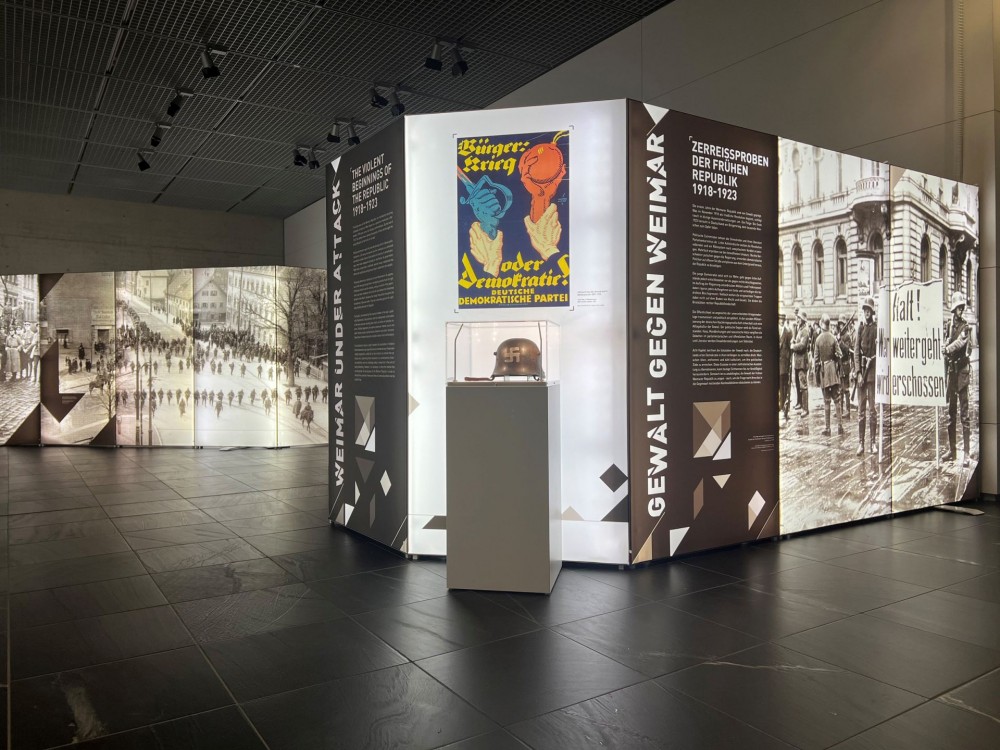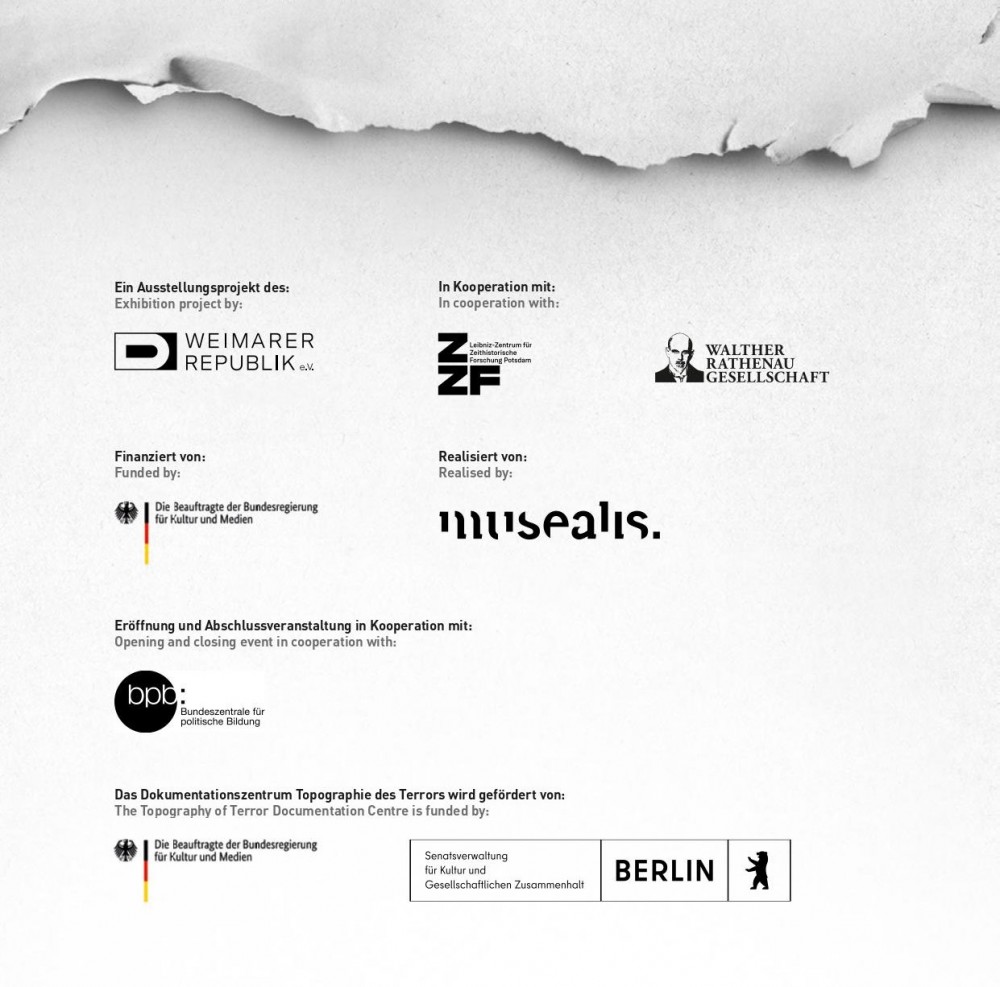
»Stop! Anyone passing this point will be shot« – Reichswehr soldiers at a roadblock in Berlin, ca. 1919.
© BArch, Bild 183-J0305-0600-003 / o.Ang.
Germany’s first democracy began with a non-violent revolution in 1918. The empire became a republic. Only a few weeks later, however, the peaceful beginnings turned violent. Uprisings, assassinations and attempted coups by both right- and left-wing factions posed a massive threat to the young republic.

Ausstellung „Gewalt gegen Weimar“ – Kapitel 5: Grenzgewalt.
Exponat: Stahlhelm des Kaiserheeres (Modell 1916) mit aufgemaltem Totenkopf, ca. 1919; Weimarer Republik e. V.
© Siftung Topographie des Terrors / Leo Seidel
The multimedia exhibition “Weimar Under Attack” traces the facets of violence in the years 1918 to 1923. It shows how extremists and separatists brought the country to the brink of civil war, the drastic means used by the state in retaliation and how the language and literature of the time reflected the brutality of the events. At the same time, the exhibition raises the question of how lines of continuity run through Germany’s long history of political violence – from the Weimar Republic through the Nazi era to the present day.

Ausstellung „Gewalt gegen Weimar“ – Einführung: Zerreißproben der frühen Republik 1918-1923
© musealis GmbH
Conceived as a traveling exhibition, the exposition was initially shown from November 2023 at Freienwalde Palace, Bad Freienwalde. After Berlin, Weimar and Hamburg are further planned exhibition venues.
Publication accompanying the exhibition
The book (in German language) „Gewalt gegen Weimar. Zerreißproben der frühen Republik 1918–1923“, edited by Martin Sabrow, published in 2023 by Wallstein Verlag (367 pp., paperback, ISBN 978-3-8353-5493-7) is available in bookstores and from March 20, 2024 on site at the Topography of Terror Documentation Center.


